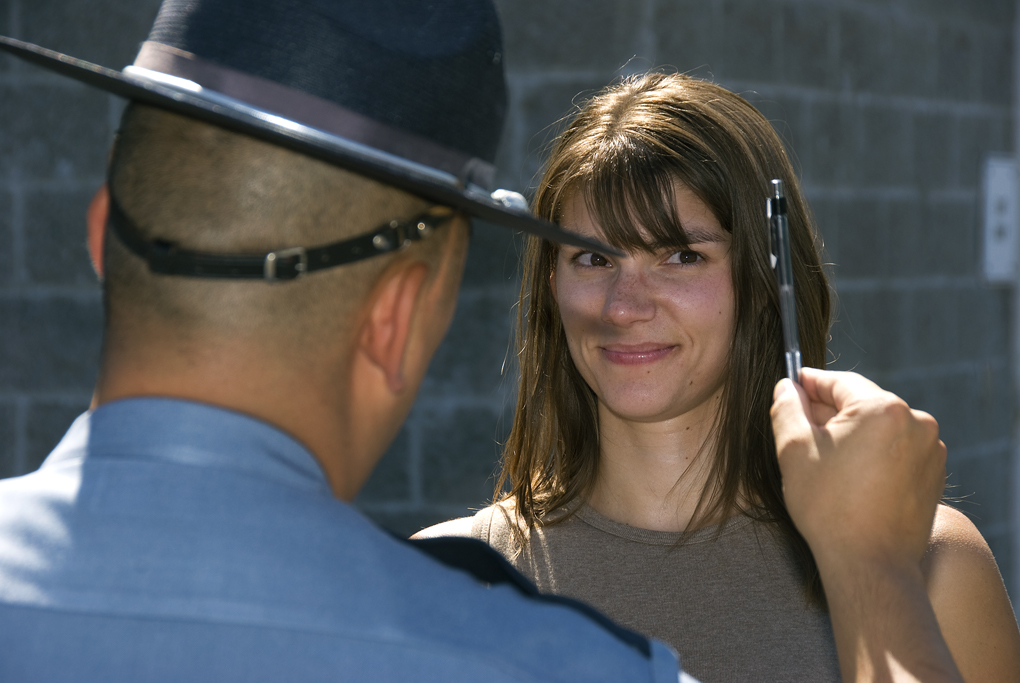Nystagmus is a neurological condition characterized by rapid and involuntary movements of the eyes.
When a driver is pulled over and suspected of operating under the influence (OVI), law enforcement officers often administer a series of roadside tests to assess whether they are too inebriated to drive. These tests, collectively known as field sobriety tests, help determine how intoxicated the driver is, and if the police officer should place OVI charges on the individual. One such test is the Horizontal Gaze Nystagmus (HGN) Test. The results of this specific roadside test can provide valuable information about the driver’s level of impairment, aiding law enforcement in their decision-making process regarding further testing or potential arrest.
Typically, charges of Operating a Vehicle Impaired (OVI) stem from the results of these roadside tests. While an OVI lawyer would advise individuals to refrain from performing these tests, sometimes individuals are not aware of this information beforehand, nor what they are performing these tests for. Consequently, they may inadvertently submit to the tests at the request of law enforcement officers during a traffic stop. Unfortunately, the results of these tests, including the Horizontal Gaze Nystagmus Test, can be used against the individual in court and may contribute to the establishment of probable cause for an OVI arrest.

What Is the Purpose Of The Horizontal Gaze Nystagmus Test?
The Horizontal Gaze Nystagmus (HGN) test is a critical component of field sobriety tests used by law enforcement officers to determine a driver’s level of intoxication. Recognized by the National Highway Traffic Safety Administration (NHTSA) as a reliable indicator of impairment, the HGN test evaluates the eyes for involuntary jerking movements, known as nystagmus, as they gaze laterally.
This test comprises three primary clues:
- Lack of smooth pursuit
- Distinct nystagmus at maximum deviation
- The onset of nystagmus prior to 45 degrees.
Each eye is independently assessed for these clues, resulting in a total of six indicators.
When not under the influence of alcohol, nystagmus occurs when the eye surpasses a 45-degree angle, but in individuals under the influence of alcohol, nystagmus may begin at angles less than 45 degrees. The early onset of nystagmus during the Horizontal Gaze Nystagmus test is considered a significant indicator of alcohol intoxication and can serve as probable cause for OVI charges. Therefore, the results of the HGN test are important to police officers when conducting roadside sobriety tests and determining whether a driver is impaired.
What Is Nystagmus?
Nystagmus is a neurological condition characterized by rapid and involuntary movements of the eyes. These movements can occur in different directions, but more commonly, horizontally (side to side) or vertically (up and down). The eye movement speed can vary, ranging from slow to rapid, and typically affects both eyes simultaneously. In some cases, the shaking of the eyes intensifies when looking in specific directions, which is why police officers will ask drivers to look in different directions. Individuals with nystagmus often adopt strategies such as tilting or turning their heads to enhance visual clarity, which helps to mitigate rapid eye movements. This condition can impact vision and may necessitate adaptive behaviors to compensate for visual impairment caused by continuous eye motion.
How Is the Horizontal Gaze Nystagmus Test Conducted?
During the Horizontal Gaze Nystagmus (HGN) test administered as part of a roadside sobriety assessment, the officer positions a stationary object, such as a pen, flashlight, or finger, in front of the test subject’s face with their feet together, and their hands at their sides. Instructing the subject to track the stationary point as it moves horizontally, the officer pays attention to the subject’s eyes for specific indicators involving nystagmus. They pay close attention to the angle at which nystagmus, the involuntary eye movement, begins.
The officer also assesses whether the eyes move smoothly or display noticeable jerking, which is a potential sign of alcohol intoxication. The officer also notes any jerking when the eyes reach their maximum lateral deviation and whether nystagmus initiates before reaching a 45-degree angle. These observations help the officer determine is the driver is inebriated and overall contribute to their evaluation of the subject’s sobriety level.
Can The HGN Test Results Be Challenged in Court?
Challenging the results of the Horizontal Gaze Nystagmus (HGN) test in court is a common strategy employed by OVI lawyers in Ohio to defend their clients against OVI charges. While the HGN test is considered a reliable indicator of impairment by the NHTSA, it relies on the subjective observations of law enforcement officers. Many law enforcement officers lack medical expertise in recognizing underlying conditions that could cause nystagmus unrelated to alcohol consumption. Furthermore, while most police officers are trained, there is always room for error and the misinterpretation of nystagmus.
In court, OVI lawyers who represent those with OVI charges may present medical experts who can testify to alternative explanations for the observed nystagmus, potentially undermining the prosecution’s case. If the HGN test was recorded on dashcam or body-worn cameras, the defense can also scrutinize the footage to ensure the proper procedure guidelines were followed during the administration of the HGN test. By challenging the validity and execution of the HGN test, OVI lawyers aim to cast doubt on the evidence presented by the prosecution and secure a favorable outcome for their clients.


Join the conversation!